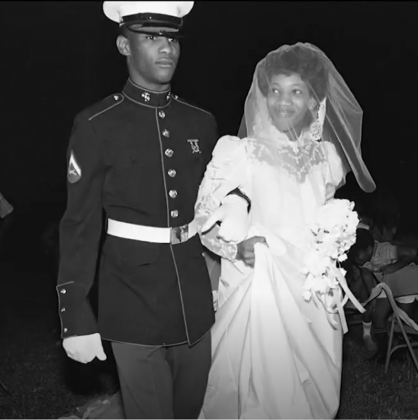Watriss & Baldwin’s sentimental journey
For many of the 125-plus who attended the Feb. 18 presentation, “Grimes County. A Journey in Time,” it was a walk down memory lane. For others it was a glimpse into history never seen before. The pictorial presentation of 1970s life in Grimes County documented by award winning photojournalists and authors Wendy Watriss and Fred Baldwin was made possible by the Two Rivers Heritage Foundation, their chairman of African American History, Carolyn Bessellieu, and the Grimes County Historical Commission.
Mythic state
It was the late 1970s when Watriss and Baldwin arrived in Grimes County to begin a small part of their larger project, “Backroads of America.” Having traveled the world, including countries in communist turmoil, they decided it was time to get in touch with their American roots again, and what better way to do that than to travel rural America from sea to shining sea.
Watriss said, “But we came to Texas first, thanks to Fred, and became captivated by the whole history of Texas. Texas is, after all, a mythic state in the U.S. microcosm.”
According to Watriss, of the state’s four cultural frontiers, Grimes County represented the “corn and cotton country, the old southern heritage of Texas.”
Detour
Seeking shelter from the rain at Green Valley Church, Watriss and Baldwin had a chance encounter with the landowner’s son. After the couple explained why they were on his property, Willie Buchanan generously allowed them to park their trailer on his land – and they did for four years.
The audience chuckled as Baldwin commented on the abundance of ‘No Trespassing’ signs they encountered as well as the scrutiny by the local sheriff and judge all the way to the Texas Rangers.
According to Watriss, some believed they were criminals or civil rights agitators but added, “We became good friends with all these people checking us out.”
Their relationship with the Buchanans grew and Watriss spoke of “the wonderful feeling in that house.” There were 12 brothers and sisters, many of whom lived on Buchanan’s 240 acres.
She said, “Willie and their grandfather actually had a will made. That was quite extraordinary - a will that was filed in the courthouse. The courthouse was not a particularly friendly place for many years for African Americans and it took a lot of courage to have a will drawn, and I think that is one of the main reasons why the family has been able to retain this amount of land.”
Faces of Grimes County
While the collection includes some circa 1800s family photos from the four or five major cultural groups who settled Grimes County, the couple’s 1970s subjects were the descendants of those Anglo-American settlers and planters from the old Tidewater South and Alabama, the Poles who came here to escape European serf laws, the German artisans and craftsmen and the African Americans who had worked here for generations.
The nostalgic black and white photographs captured for posterity activities at the Bedias Civic Club, dominos in Shiro, dancing at the Anderson KC Hall and night life on Railroad Street. And then there were parades, Little League games, football and prom, barbecues, bathing beauty contests, weddings, funerals, communions and tank baptisms. There were the Moore and Terrell Farms, the DAR, the Masons…and many more faces of Grimes County.
Color barrier
There were a substantial number of photos documenting the African American rodeo circuit.
Watriss said, “It was difficult to break the color barrier so all over Oklahoma and Texas, there were black rodeos.”
According to Watriss, they operated every weekend and popular Navasota High School Assistant Principal Woodrow Jackson used to announce.
Pausing at a photo of a farmer in the Blackberry Community, Watriss said, “There were a group of independent African American farmers who managed to hold on to land…that tended to be rare. They had a church and a school. They were very big on education and higher education.”
Watriss went on to say, “Much of the white part of the state had forgotten June 19. Grimes County was one of the few counties that kept it alive and the Calhoun’s (F.D. Calhoun) were one of the major organizers.”
The presentation closed with Watriss’ recognition of the extensive work of Carolyn Bessellieu in retrieving the history of African Americans “who by and large were left out of history books.”
The final photos paid tribute to those Grimes County residents whose achievements often went unnoticed such as choreographer Alvin Ailey, educators James Delbridge Ryan and James Blaine Moore, banker Jesse Homer Mitchell and editor-publisher Professor J.M. Codwell.
Watriss said, “What we were trying to feel, and extract, was the quality of life and character of life in this county.”
From the sound of the applause, it sounded like they succeeded!

